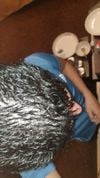An Atlas of Hair Pathology with Clinical Correlations, Second Edition
January 2013
in “
Dermatology practical & conceptual
”

TLDR The book is a useful guide for identifying hair loss conditions with clear photos and treatment tips, recommended for skin and hair specialists.
The second edition of "An Atlas of Hair Pathology with Clinical Correlations" by Sperling, Cowper, and Knopp, published in 2012, was a valuable resource for diagnosing alopecia. It was praised for its clear photomicrographs, easy-to-understand text, and the addition of new chapters on various types of alopecia and hair loss conditions. This edition also included brief descriptions of treatments for several entities and additional photos with better clarity. The summaries at the end of each chapter included potential pitfalls to avoid. The book was recommended for dermatologists, dermatopathologists, and residents diagnosing alopecia.






